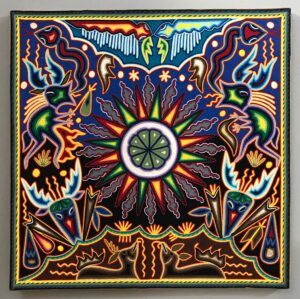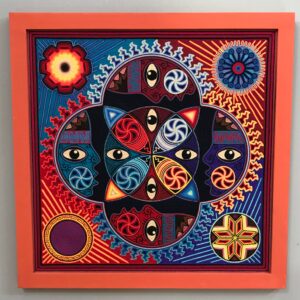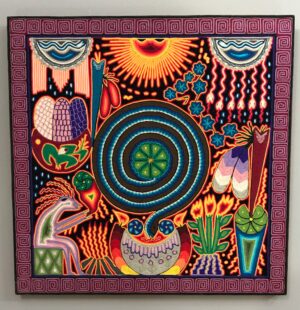Galería Atotonilco owner, Mayer Shacter, had been a distinguished ceramic artist and then a San Francisco Bay Area antique dealer when he moved to San Miguel in 2003. Already an avid collector of Mexican folk art, he started a folk art gallery in a building on his property near the historic church of Atotonilco, five miles north of San Miguel town.
Now in its sixteenth year, the gallery has grown to 6,000 square feet of exhibition space. According to Alberto Ruy Sanchez, editor of Artes de Mexico magazine, “Galeria Atotonilco is, without doubt, the finest exhibition and sale of Mexican popular arts in the country.”
Mayer and his wife Susan travel all over Mexico and into Guatemala each spring in search of the finest artists working in a wide variety of traditions and crafts. Mayer’s lifelong experience in the arts, as a craft artist himself, a collector, and a dealer gives him a seasoned eye for quality and beauty, and he never settles for less. The gallery is known for the exceptional quality of every piece and the wide variety of artistic traditions it presents.

Mayer’s passion is to support talented and hard working artists and to keep alive the artistic traditions, myths, and stories that are the heart and soul of Mexico.
Much of Mexican folk art has its roots deep in the pre-Hispanic history of Mexico. The Spanish never fully succeeded in stamping out Mexico’s ancient peoples and traditions. More than sixty indigenous languages are still spoken in Mexico, in large populations where ancient traditions flourish. Though they are now sometimes blended with the Catholicism of the Spanish conquerors, the traditions live on in regional dances, elaborate rituals, native languages, and perhaps above all in the richly varied and sometime ancient traditional arts.
The families who are carrying on traditional village crafts, generation after generation, must be able to make a living selling their work. Children learn the village craft when they are young, and even if they later become doctors, lawyers, teachers, or engineers, still, they return to the family evenings and weekends to work in the craft in which they have developed great skill. A purchase of Mexican folk art not only adds beauty, fascination, and even spiritual depth to your home; it will help to keep these arts alive for many generations to come.

For more information on Galería Atotonilco visit:



